The AMD Ryzen Threadripper 1950X and 1920X Review: CPUs on Steroids
by Ian Cutress on August 10, 2017 9:00 AM ESTGrand Theft Auto
The highly anticipated iteration of the Grand Theft Auto franchise hit the shelves on April 14th 2015, with both AMD and NVIDIA in tow to help optimize the title. GTA doesn’t provide graphical presets, but opens up the options to users and extends the boundaries by pushing even the hardest systems to the limit using Rockstar’s Advanced Game Engine under DirectX 11. Whether the user is flying high in the mountains with long draw distances or dealing with assorted trash in the city, when cranked up to maximum it creates stunning visuals but hard work for both the CPU and the GPU.
For our test we have scripted a version of the in-game benchmark. The in-game benchmark consists of five scenarios: four short panning shots with varying lighting and weather effects, and a fifth action sequence that lasts around 90 seconds. We use only the final part of the benchmark, which combines a flight scene in a jet followed by an inner city drive-by through several intersections followed by ramming a tanker that explodes, causing other cars to explode as well. This is a mix of distance rendering followed by a detailed near-rendering action sequence, and the title thankfully spits out frame time data.
There are no presets for the graphics options on GTA, allowing the user to adjust options such as population density and distance scaling on sliders, but others such as texture/shadow/shader/water quality from Low to Very High. Other options include MSAA, soft shadows, post effects, shadow resolution and extended draw distance options. There is a handy option at the top which shows how much video memory the options are expected to consume, with obvious repercussions if a user requests more video memory than is present on the card (although there’s no obvious indication if you have a low-end GPU with lots of GPU memory, like an R7 240 4GB).
To that end, we run the benchmark at 1920x1080 using an average of Very High on the settings, and also at 4K using High on most of them. We take the average results of four runs, reporting frame rate averages, 99th percentiles, and our time under analysis.
All of our benchmark results can also be found in our benchmark engine, Bench.
MSI GTX 1080 Gaming 8G Performance
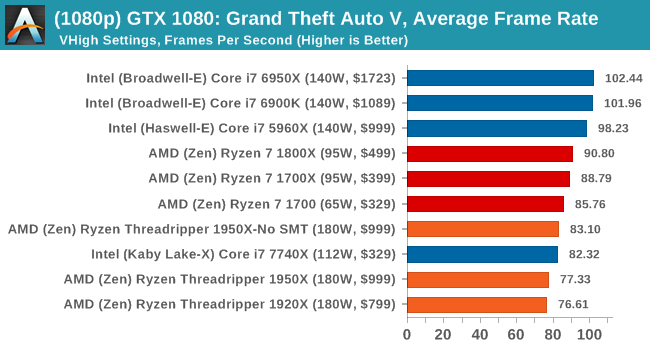
1080p

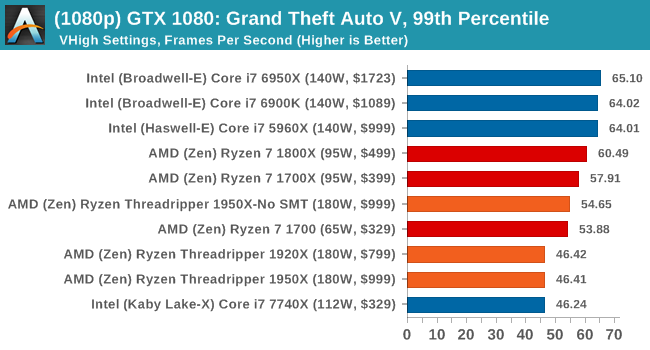
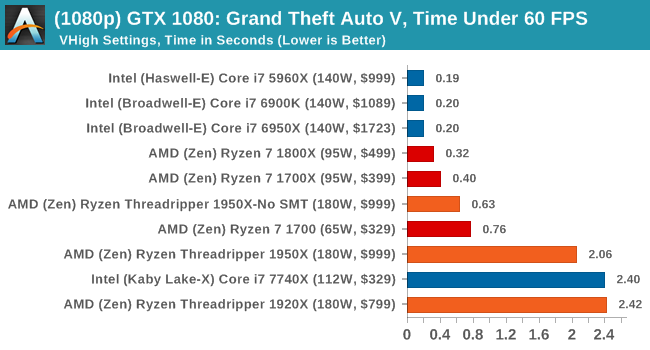
4K

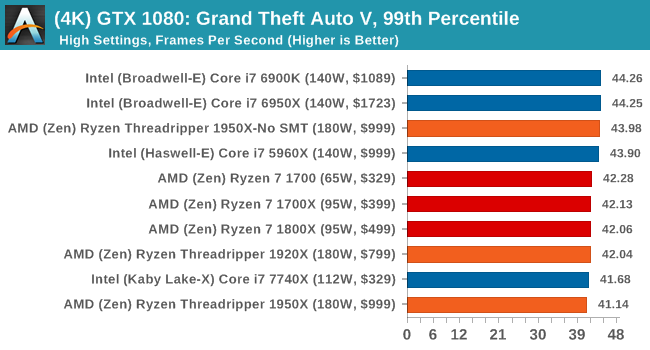

ASUS GTX 1060 Strix 6G Performance
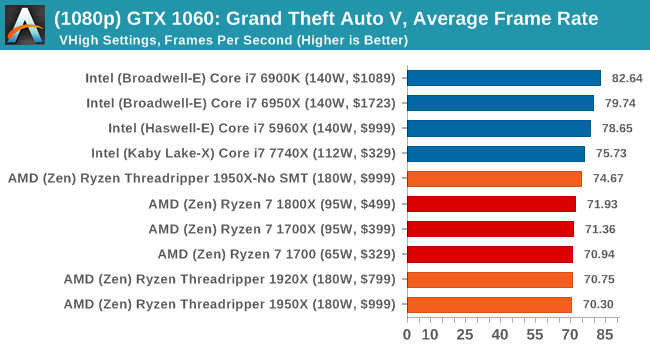
1080p

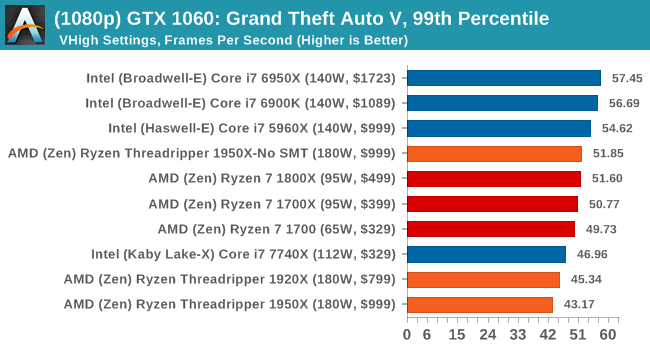
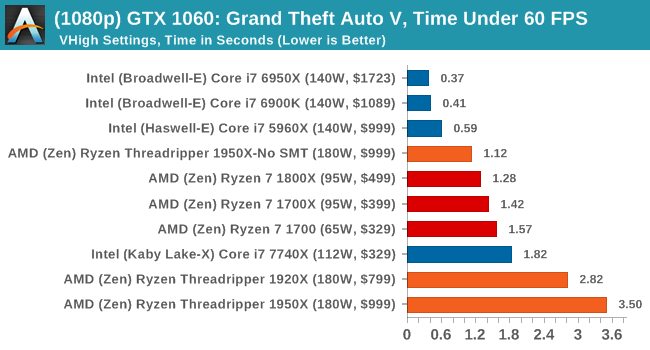
4K

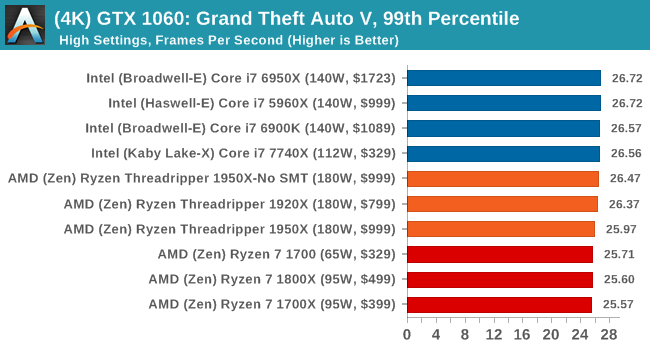
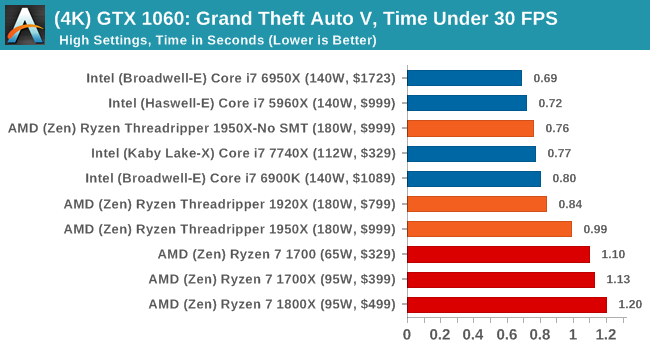
Sapphire Nitro R9 Fury 4G Performance
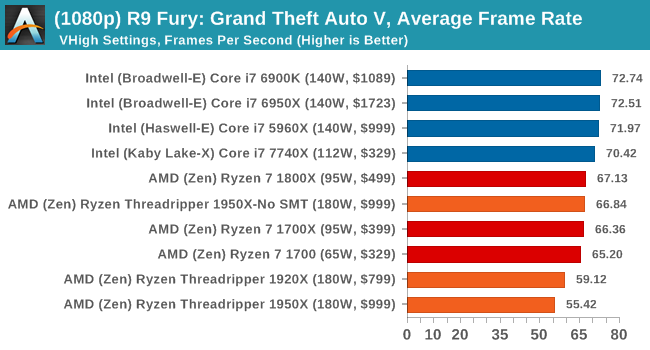
1080p

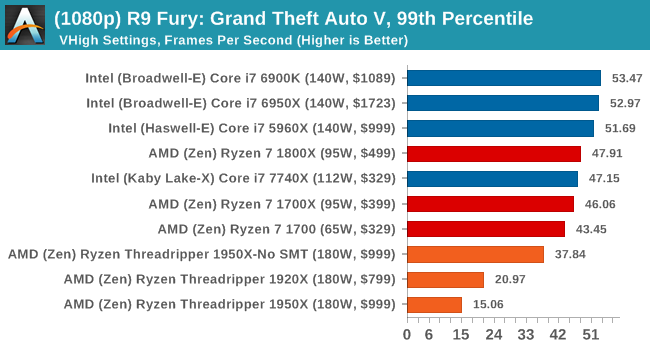
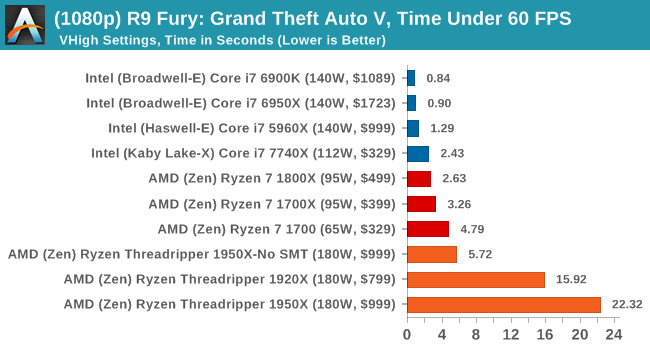
4K
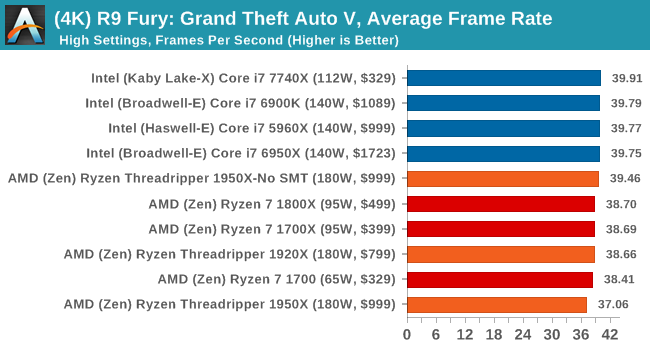
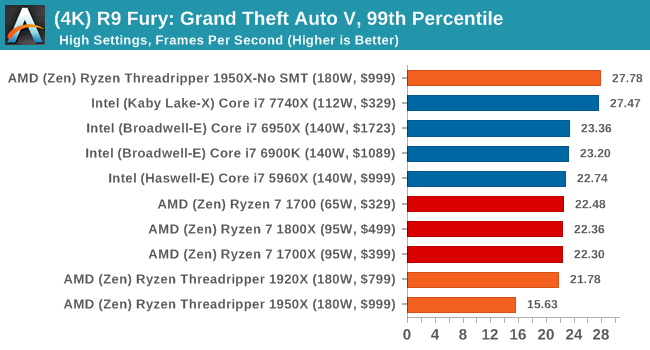
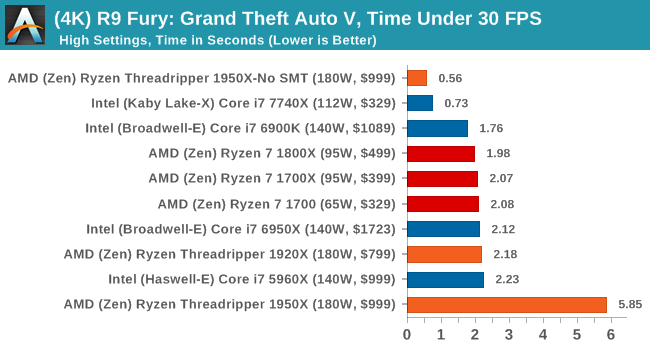
Sapphire Nitro RX 480 8G Performance
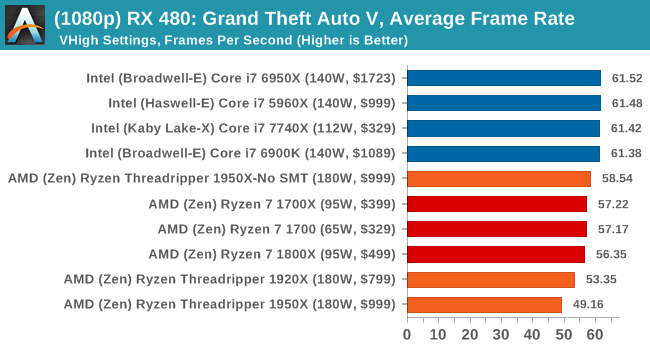
1080p

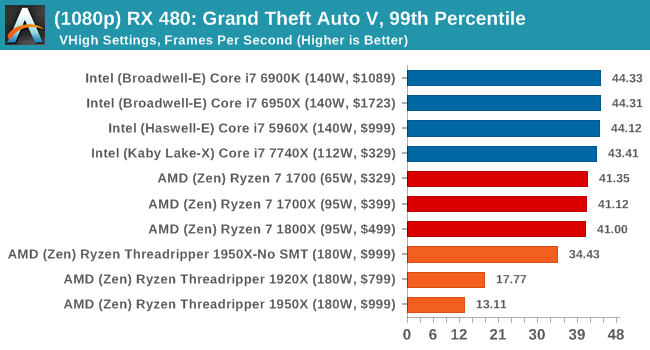
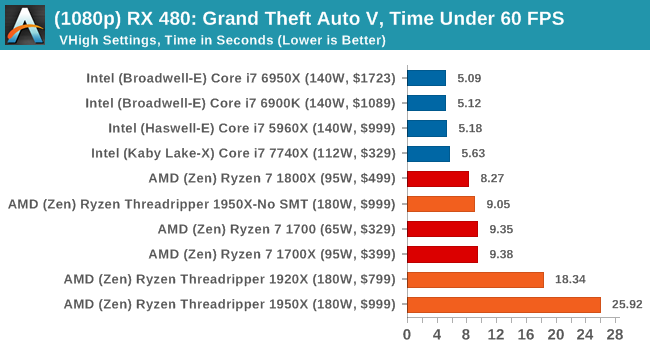
4K
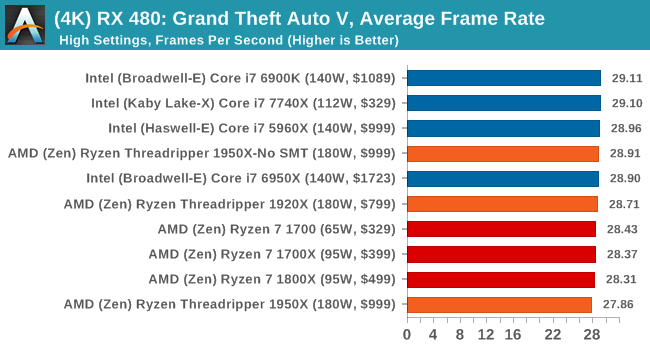
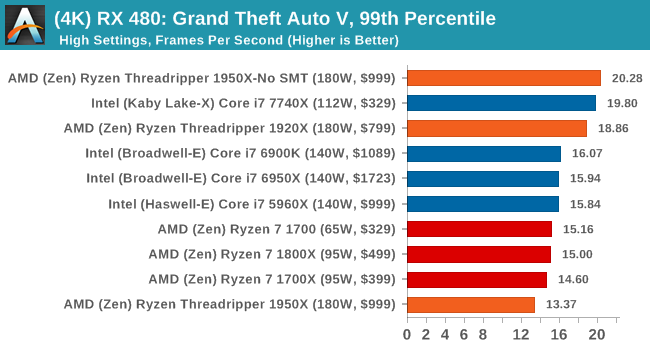
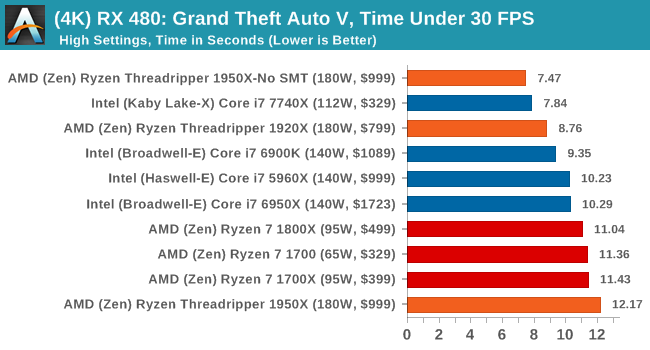
Depending on the CPU, for the most part Threadripper performs near to Ryzen or just below it.













347 Comments
View All Comments
Makaveli - Thursday, August 10, 2017 - link
Some professional work from home. Kinda of a silly question.mapesdhs - Thursday, August 10, 2017 - link
Yeah, I just inferred that'd be the case.prisonerX - Friday, August 11, 2017 - link
"640K should be enough for anyone"peevee - Thursday, August 10, 2017 - link
I had a lot of hope for Threadripper as a development machine... but when 16 core TR loses so bad to 10-core 7900x or even 8-core 7820x in compilation, there is something seriously wrong with the picture. Too much emphasis on FP performance nobody at home needs all that much (except in games where it is provided by GPU and not CPU anyway)? Maybe AT tests are wrong, say, they have failed to specify /m for MsBuild?peevee - Thursday, August 10, 2017 - link
Well, there is a good chance that the optimal config for the test would be SMT on (obviously) and NUMA on.peevee - Thursday, August 10, 2017 - link
Hiding the fact that the CPU is NUMA both from the OS and from software is a very bad idea. Thread migration out of a core is a disaster all but itself, but thread migration to different memory and especially L3 cache (as big as it is) should never be attempted.peevee - Thursday, August 10, 2017 - link
Basically, at this point I would take 7820x over TR1950X for every task, with similar MT performance in vast majority of tasks not offloadable to a GPU, better mixed-load performance and much better ST performance. And would save $400 and electricity costs in the process.BOBOSTRUMF - Friday, August 11, 2017 - link
Take your Intel, I'm with the ThreadRipperLolimaster - Friday, August 11, 2017 - link
X299 + cpu consumes and produces way more heat than TR, and that's a fact, anand is anand, if you're happy for you blu placebo site, good for ya.Notmyusualid - Saturday, August 12, 2017 - link
@ peeveeI'm sort-of eyeing-up the 7900X myself. But I have the feeling the Mrs. will sh1t if I buy any more new toys, and my 13 Nvidia GPUs.... :)